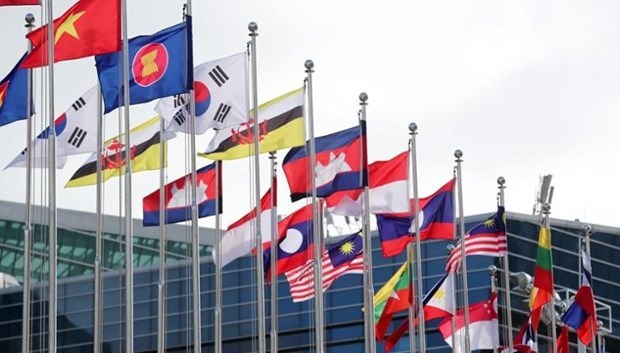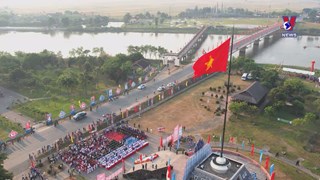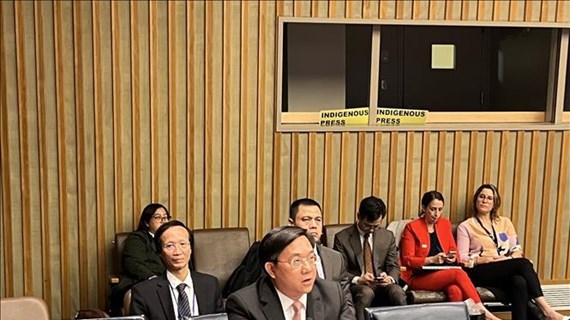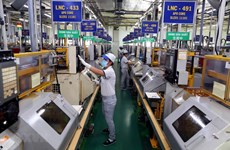ASEAN becomes RoK’s major export, production destination
 The RoK flag flies alongside flags of ASEAN member countries. (Photo:koreatimes.co.kr)
The RoK flag flies alongside flags of ASEAN member countries. (Photo:koreatimes.co.kr)Seoul (VNA) – As trade competition between China and the US continues to intensify, the Association of Southeast Asian Nations (ASEAN) is rapidly emerging as the Republic of Korea (RoK)’s global manufacturing base and an important export market.
In a recent report of the Bank of Korea (BOK) on the RoK’s export characteristics and future prospects, the bank assessed that five ASEAN countries (ASEAN 5), including Vietnam, Malaysia, Indonesia, the Philippines, and Thailand, currently have the largest proportion of the RoK’s imports among the 10 ASEAN member countries.
Since 2019, trade surplus between the RoK and the five counties has far exceeded the size of that with China. In 2023, the RoK’s foreign direct investment (FDI) in the region jumped to the second place only after the US.
According to the report, ASEAN is considered as the final transit point of the RoK’s exports before reaching other markets. As of 2022, about half of the RoK’s exports to the five ASEAN member countries were for on-site consumer goods production purposes, and investment from the RoK in the five countries had also increased sharply with export trade flows.
The RoK’s exports to ASEAN 5 are expected to upswing in the coming time, thanks to factors such as the continued recovery of the information technology (IT) economy, faster-than-expected economic growth in the US, and expanded investment in emerging countries.
Besides, it not only directly
benefited from the economic recovery of ASEAN 5, but the faster-than-expected
recovery of the US economy, along with the recovery of consumption in Europe, will contribute to increased exports from the RoK to the ASEAN region.
ASEAN is increasingly emerging as a stable and robust global manufacturing
base, and the RoK’s competition with other countries ensures its expected
market share in the region will grow larger in the medium to long term. Competition
is expected to intensify not only in the intermediate goods sector but also in
end-to-end consumer goods such as electric vehicles and batteries. This is
because Chinese and Japanese companies are looking to ramp up production in
ASEAN countries, through the construction of factories to produce cars and
batteries for electric vehicles.
The BoK said that in order for exports to ASEAN to grow stably in the future, the RoK needs to focus on improving the quality of intermediate goods as input materials for production, while paying attention to increasing exports of high-quality consumer goods, taking into account the growth potential of ASEAN's population and consumer market./.













